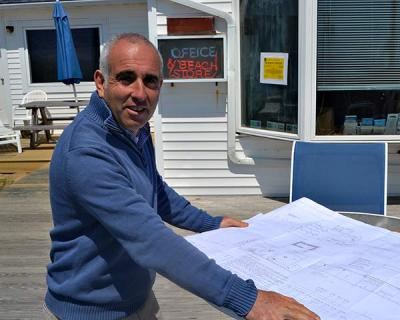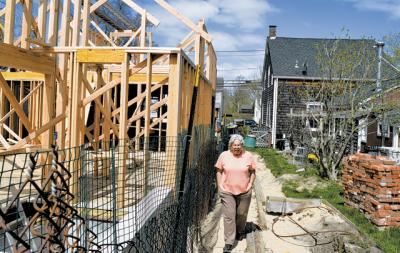Pilot Project Would Stop Contaminants Before They Hit the Harbor
Pilot Project Would Stop Contaminants Before They Hit the Harbor

A pilot project aimed at reducing the flow of nitrogen into surface waters would see the installation of a permeable reactive barrier at the head of Three Mile Harbor in East Hampton.
A committee of the Suffolk County Water Quality Protection Review Program has awarded the town $125,000 for the effort, called the Green Reach Infrastructure Demonstration Nitrogen and Stormwater Abatement Project. The town board voted last month to authorize an agreement with the county for its implementation.
The award must still be approved by the full County Legislature. Kim Shaw, the town’s director of natural resources, said yesterday that she expects to present the proposal to it next month.
Ms. Shaw also sought permission from the East Hampton Town Trustees, who manage most town waterways and bottomlands on behalf of the public, to implement the project. The trustees endorsed the plan at their April 14 meeting.
The barrier, comprising trench boxes filled with ground-up woodchips, would be installed behind an existing bulkhead to intercept groundwater as it seeps into Three Mile Harbor. Its installation would require “minimal excavation,” Ms. Shaw told the trustees, and it would have a lifespan of 20 years or more. Should the county provide funding, installation would happen in the fall, she said. “This is one step in the right direction to intercept some of that groundwater,” she told the trustees.
“This is the first time it’s been tried on Long Island that I’m aware of,” said Christopher Smith, a senior educator at Cornell Cooperative Extension of Suffolk County, with which the town has partnered to conduct nitrogen-mitigation efforts. But the technique, he said, has proven effective on Cape Cod in Massachusetts. There, he said, officials of the United States Geological Survey created an environment in which anaerobic bacteria transforms the liquid nitrogen coming through it into atmospheric, or gaseous, nitrogen. “You have to get an organic material in an anaerobic environment for these bacteria to thrive, just like in septic systems,” Mr. Smith said. Woodchips were chosen due to their longevity, availability, and the bacteria’s effectiveness. Those bacteria, he said, “chew up nitrogen, so to speak.”
At Three Mile Harbor, water would be sampled before it reaches the barrier and after exiting it, the goal being to remove 20 to 50 percent of the nitrogen. “We’ll be able to determine efficiency, which matters a lot,” Mr. Smith said.
A similar project in Accabonac Harbor, for which the town received a $150,000 grant from the state’s Department of State, has been held up by a permit from the New York State Department of Environmental Conservation, which is pending, Ms. Shaw said.
Excessive nitrogen contributes to a drop in oxygen levels, which promotes the growth of harmful algal blooms including red tide. When filter-feeding bivalves such as clams, mussels, and oysters consume those algae, they can accumulate toxins and be unsafe for human consumption. Consequently, waterways are closed to shellfish harvesting.
In recent years, the trustees, in conjunction with Christopher Gobler of Stony Brook University, have been monitoring waterways including Three Mile Harbor. In a March 30 presentation summarizing his 2014 findings, Dr. Gobler said that oxygen levels in Three Mile Harbor fell below the State Department of Environmental Conservation’s standard in August and early September, and both red tide and rust tide, which are not harmful to humans but are potentially lethal to marine life, were measured.
“We know from the work the trustees have done with Dr. Gobler that the head of the harbor is a chronic problem,” East Hampton Town Supervisor Larry Cantwell said. “To the extent we can remove nitrogen from migrating into the head of the harbor, that’s important work.”





